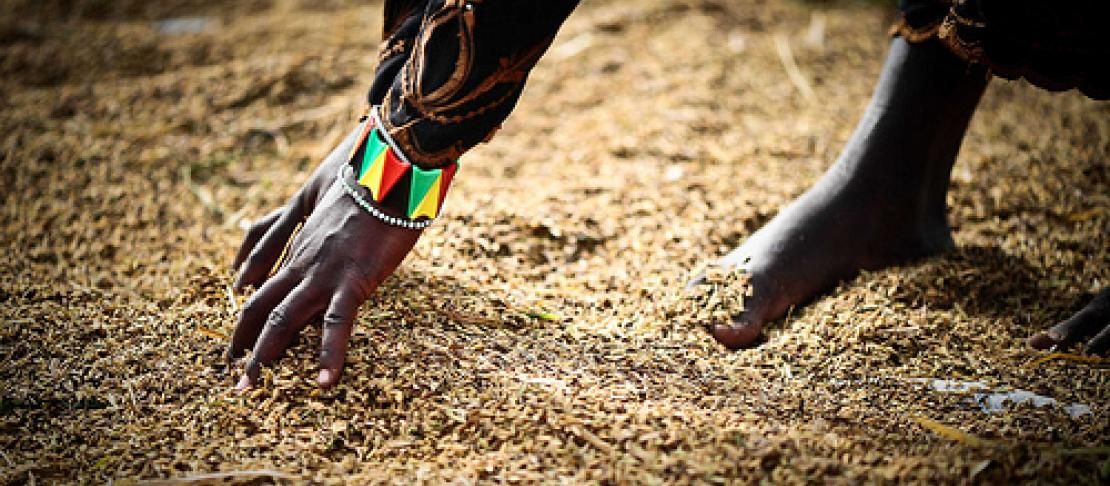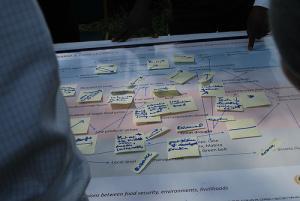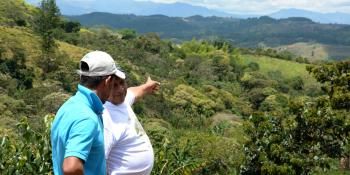Exploring regional strategies for a more sustainable, food secure East Africa

How can East Africa’s economic, agricultural and environmental policies improve food security, environments and livelihoods given the dynamic global economic and environmental changes affecting the region? What is the role of regional governance bodies like the Eastern African Community in this future? And how can civil society and the private sector work with different policy directions?
To explore these questions, the CGIAR Research Program on Climate Change, Agriculture and Food Security (CCAFS) has collaborated with regional stakeholders to develop plausible scenarios, or alternate futures - exploring different socio-economic and political directions of change for East Africa, how these changes interact with climate change, and what their impacts are on future food security, livelihoods and environments. Read the related blog story "CCAFS scenarios engage regions to plan for uncertain futures" for more information.
Now, CCAFS is engaging governments, civil society and the private sector to think about what strategies would be needed to work toward a more food secure, sustainable future. To do this, CCAFS and their partners at the Society for International Development organize a series of workshops in its regions, where stakeholders come together to develop a shared vision for their region for improved food security, environments and livelihoods. They then work back from this desired future through the different scenarios, in a “backwards planning” process. The different scenarios help stakeholders explore what strategies and policies are needed to deal with future challenges in terms of socio-economic and political change interacting with climate change. This process results in strategies and policy options that are robust under different plausible futures.
Non-state actors get creative with the future
In a first strategic planning workshop with non-state actors in East Africa in Nairobi on 5-6 June 2012, a vivid vision was first created for a better East Africa. Participants were asked to dream freely for a moment – the challenges to reach this vision would come later. The vision included an East African “bread basket booming”, with a woman leading a powerful East Africa Federation, ‘A Rift Silicon Valley ‘that has created 100,000 jobs, and an environment ‘so fresh it will heal your soul’ by the year 2030.
Then, the backward planning began, using the different scenarios. What challenges and opportunities will these different future worlds offer when we look back from the vision to the present? In scenarios where state actors were proactive and worked on regional integration, the non-state actors participating in the workshop could develop partnerships with them and develop creative and concrete strategies for improved food security, environments and livelihoods. In scenarios where state actors were proactive but fragmented, effective but more modest consortia were proposed. In scenarios where state actors were integrated regionally but were reactive to issues of food security, environmental management and livelihoods support, the non-state actors found it challenging to go against this reactiveness. However, in a scenario where the dominant governance style was reactive and East Africa was fragmented, non-state actors decided not to “wait” for governments and explored creative ways to harness the potential of civil society toward their visions.
Through the backward planning process, many more detailed strategies emerged, such as:
- A “West Wing” type TV program portraying a young dynamic woman leader of a vibrant EA federation
- Plans for food reserves organized at the regional level
- A long-running media campaign on tree growing led by private sector
- Capacity building for online commerce by NGOs and farmers organizations
Some common themes the working groups spotted:
- Youth and their enthusiasm for change
- ICT and technology leapfrogging e.g. M-PESA
- An emerging innovative private sector and informal sector
The most important overall insight gained from planning backward in the context of different future worlds was, according to many participants, just how much of the possibilities of the long-term future depend on actions taken now or in the next couple of years.
The results from this workshop will be published as a guide both to non-state actors in East Africa and to policy makers to help them understand the strategic positions of non-state actors and how they can contribute to a more food secure, sustainable future.
Policy makers planning from the future
Importantly, these results will be used by policy makers from East African Countries through the Eastern African Community in a CCAFS and SID-led workshop in Arusha on 3-5 September, 2012. This workshop follows the backward planning model, but this time, the policy makers themselves explore the viability of different policy pathways to a better future and consider how they will work with the potential of other sectors to achieve this.
This workshop will also include a marketplace where policy makers get to engage with various research and information tools for agricultural and environmental management.
View pictures from the non-state actor workshop in Nairobi in June.
Read more about our Scenarios Research.
This story was written by Joost Vervoort, Scenarios Officer, and Patti Kristjanson, Theme Leader, Theme 4.1: Linking Knowledge with Action at the CGIAR Research Program on Climate Change, Agriculture and Food Security (CCAFS). To get more updates on our scenarios research, follow us on Facebook, and Twitter @Cgiarclimate.



